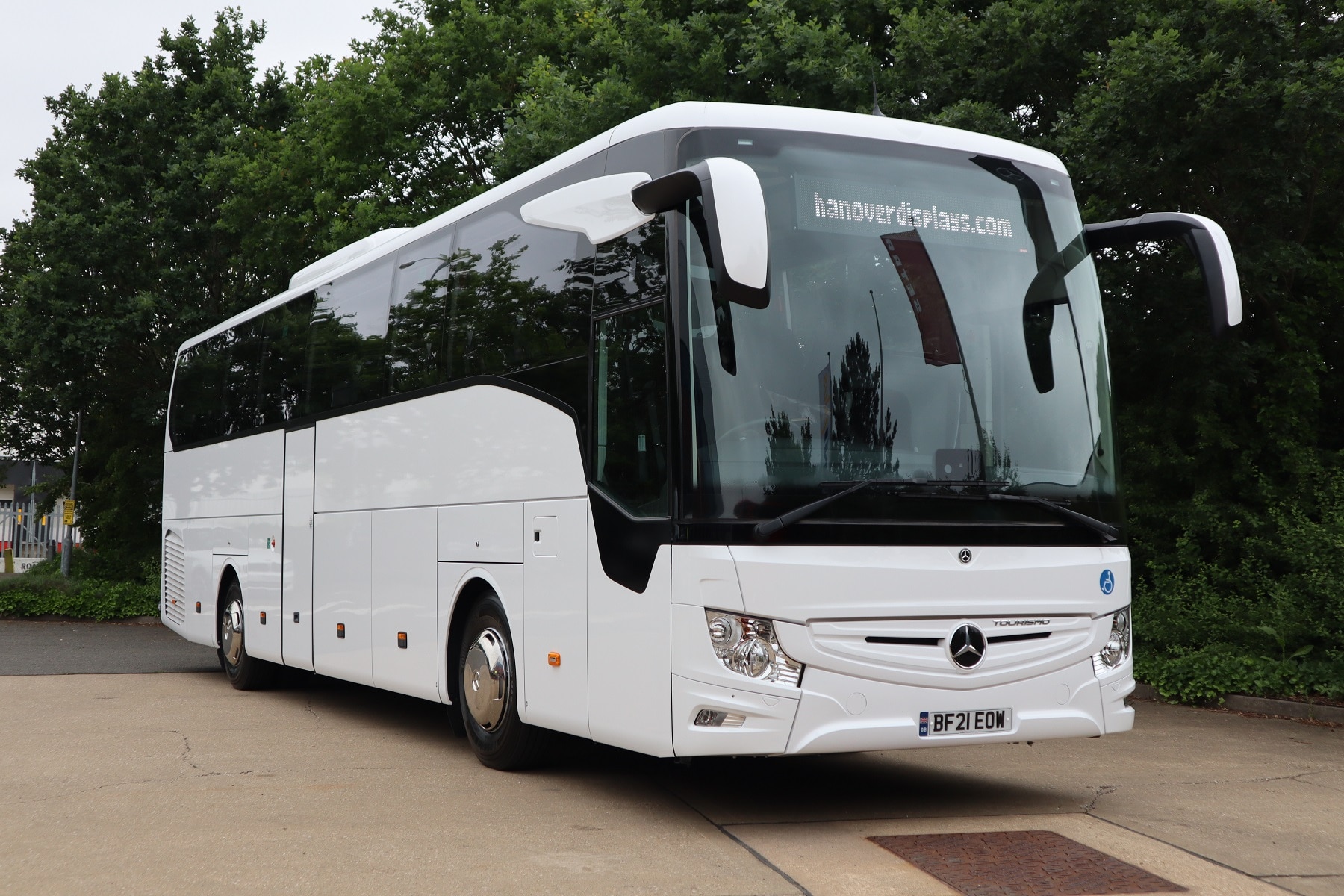In the Mercedes-Benz Tourismo Access, EvoBus (UK) aims to service demand for a cost-effective yet PSVAR compliant coach. This new variant was revealed in February and the first arrived recently. It comes with a simpler specification than other members of the range, but it nevertheless shares a lot with them. The dealership has already seen significant interest despite a difficult market for new coaches presently.
“The idea of the Tourismo Access is that it is a standard-specification coach with a small number of options: Toilet, gangway carpeting and paint,” says Director Sales Mercedes-Benz Jonathan Prime, who reports that around 10 have been sold already.
The Tourismo Access comes on two axles at 12.3m or 13.1m. The shorter variant seats 53 with a toilet and up to 55 without; for the longer model, those figures are 53 and 59, respectively.
Its specification has been developed to suit UK demands, with PSVAR a clear consideration. While the Tourismo Access is undoubtedly a simple coach, it is not just a home-to-school vehicle. It will also suit private hire, rail replacement and day trips, making it a versatile contender. A leasing option for up to seven years will also tick boxes for some.
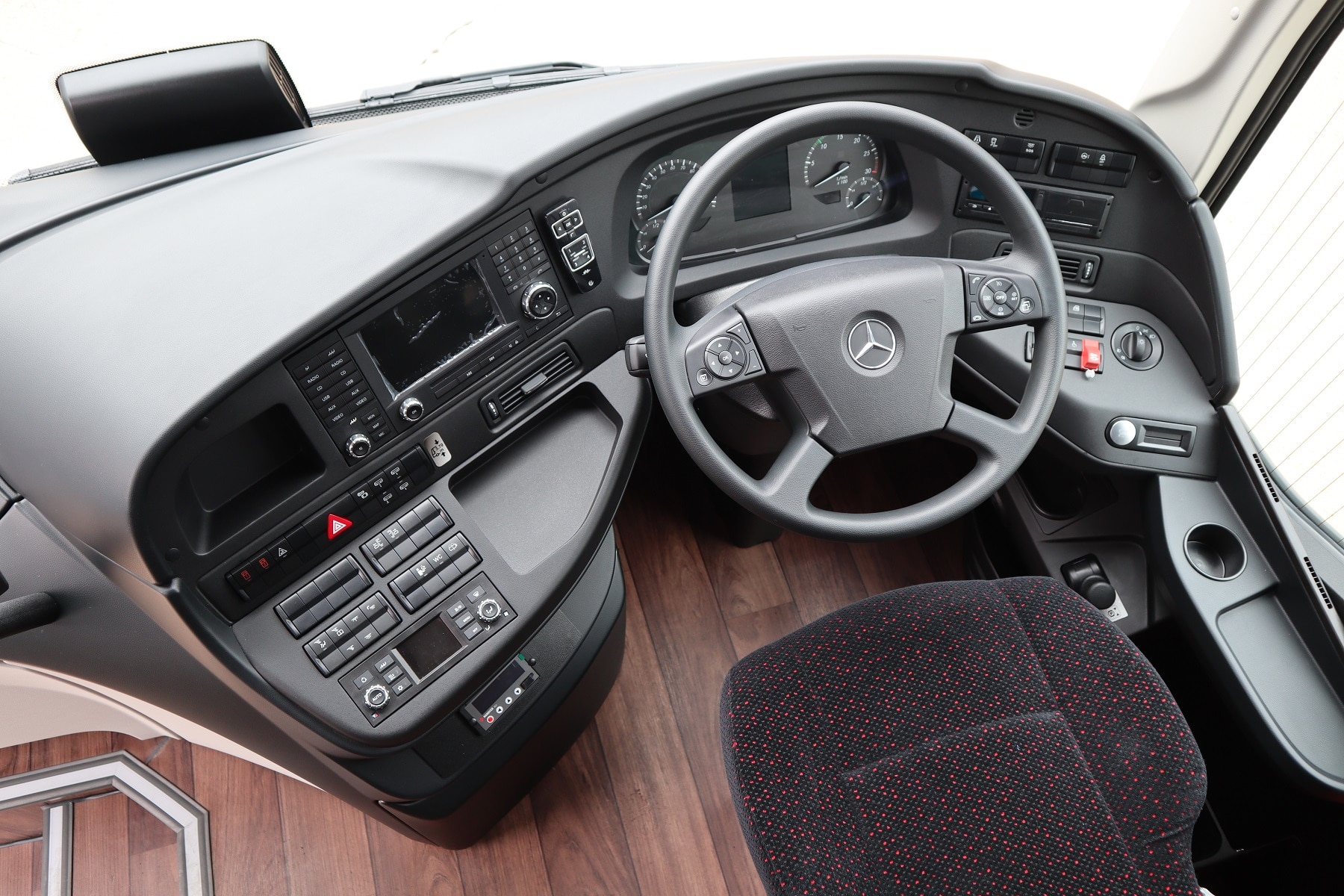
Key to the Access’s cost-effective nature is its standardised driveline: The 7.7-litre OM 936 engine coupled to the eight-speed Powershift 3 automated manual gearbox.
The OM 936 is much smaller than the 10.7-litre OM 470 that is standard for the rest of the range, but it is part of a family that has proved to be fuel efficient in bus use.
routeone was recently able to drive first Tourismo Access to land in the UK, a 12.3m version that has already been sold to a Lancashire operator.
Tourismo Access has some differences – but many similarities
When approaching the Tourismo Access, there is scant evidence that it differs to other members of the range, although the most obvious hint is provided by the wheels. They are steel and have polished trims. Additionally, the window tint is slightly lighter – something that is most obvious once aboard.
A 300kg Hubner lift is fitted immediately behind the front axle. It is accessed via a ‘letterbox’ at the bottom of the luggage bay door and has a shelf above it. Operation is by a wanderlead. Destination display equipment is from Hanover and the unit on the nearside is above the front wheel.
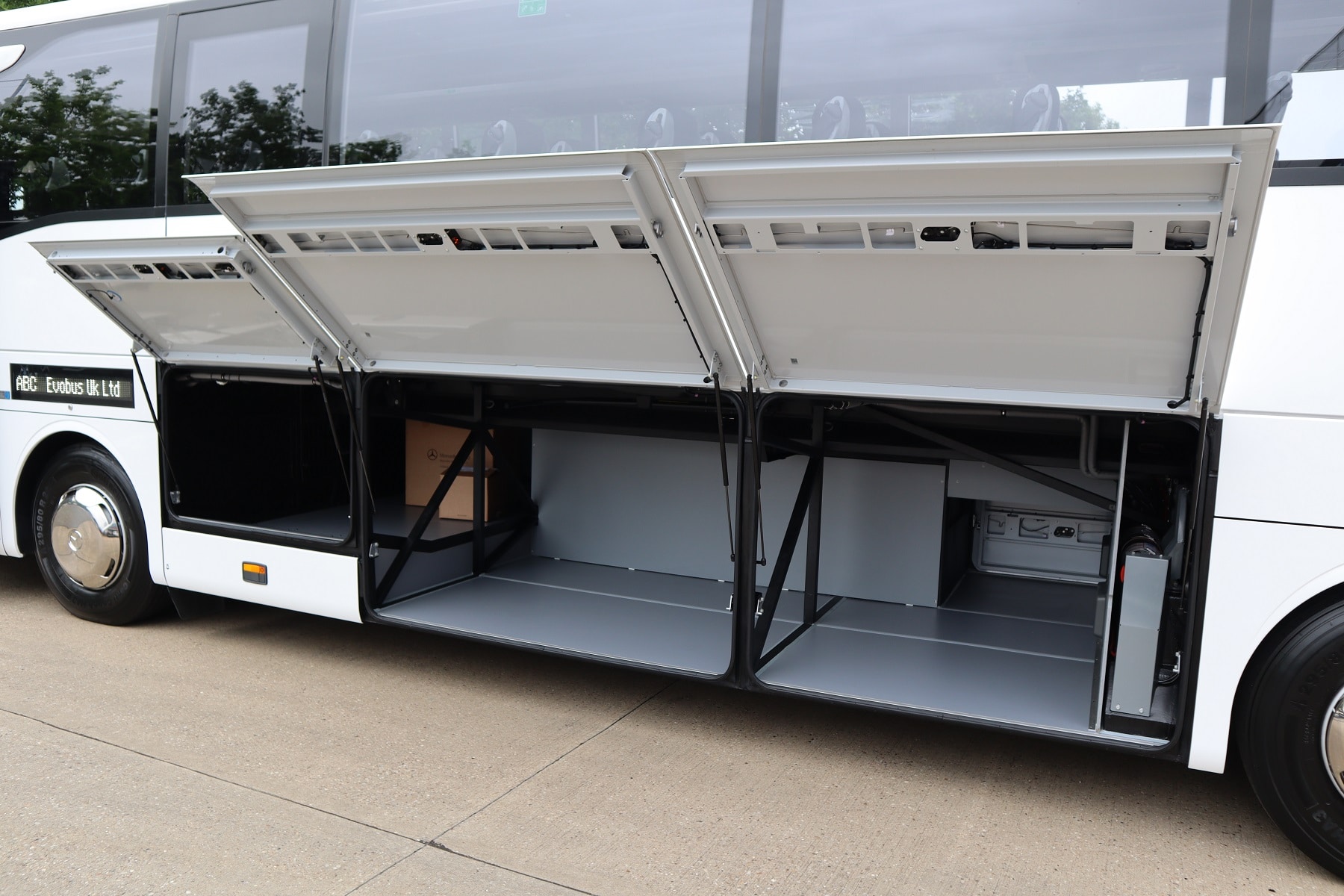
Locker doors are manually operated and top-hinged. EvoBus (UK) has deleted the hatch between the continental door’s centre stairway and the luggage bay on the Access.
On the offside, some space is available in a locker behind the rear wheel. It is ideal for the driver’s cleaning products or belongings – although storage space in the cab is excellent.
A 480-litre fuel tank is mounted over the front axle, with twin fillers. Ad-Blue capacity is 40 litres. The radiator is on the offside.
Accessible interior is specified ready ready for hard work
The Tourismo’s doorway and steps are wide, although the latter aspect is constrained a little by a chunky courier seat. The handrail arrangement here is good, with a large flowing bar on the left and two smaller rails on the right, including one on the underside of the courier seat base. Four steps lead to the platform and two more to the sunken gangway.
Travel Star Eco seats are fitted to the Tourismo Access. Standard on each is an all-age three-point belt, aisle armrest, magazine net, a coat hook and twin upright handholds.
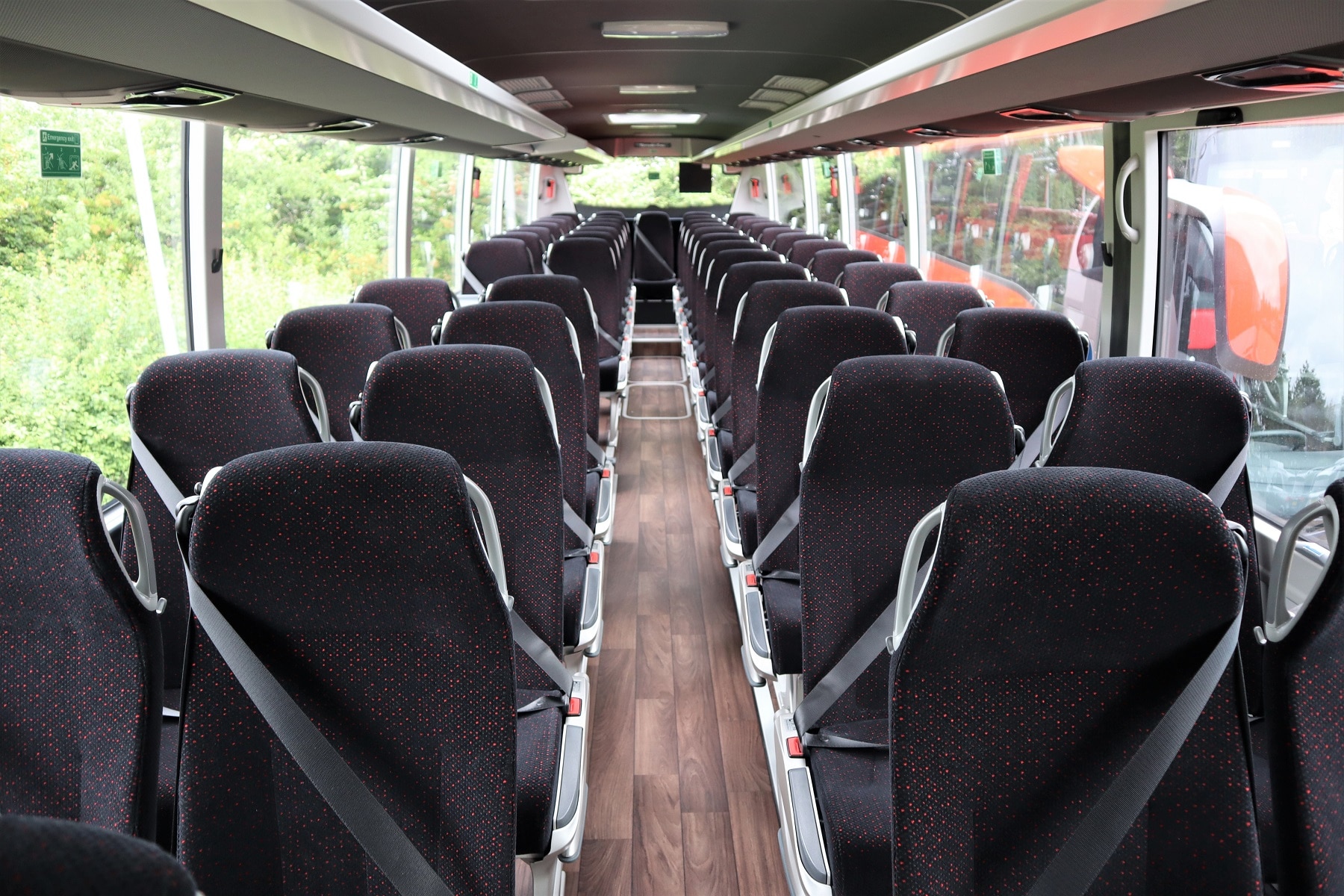
Neither recline nor side-shift are included, and the covering is entirely moquette; there are no leather inserts. USB charging points within the lower frame will be added after arrival in the UK.
As tested, the Tourismo Access comes with the same centre sunken toilet as fitted to the remainder of the Tourismo range.
No monitors are fitted, although the coach does have a dash fridge.
Tourismo Access comes with a suprising amount as standard
The luggage racks and passenger service units are also standard Tourismo, while perhaps surprisingly in view of its cost-effective nature, wood-effect flooring is part of the Access’s specification. Carpeting can be fitted above it in the gangway as an optional extra.
A comprehensive climate control system includes a coolant pre-heater, perimeter radiators and a roof-mounted air-conditioning unit that proved more than capable of chilling the coach. Control is via a relatively simple dash unit. Also fitted as standard is active antiviral filtration.
The Tourismo Access’s means of accommodating wheelchair users differs slightly to some other coaches. On the test vehicle, three pairs of seats are tracked, although some wheelchair users can be carried by removing only two of them.
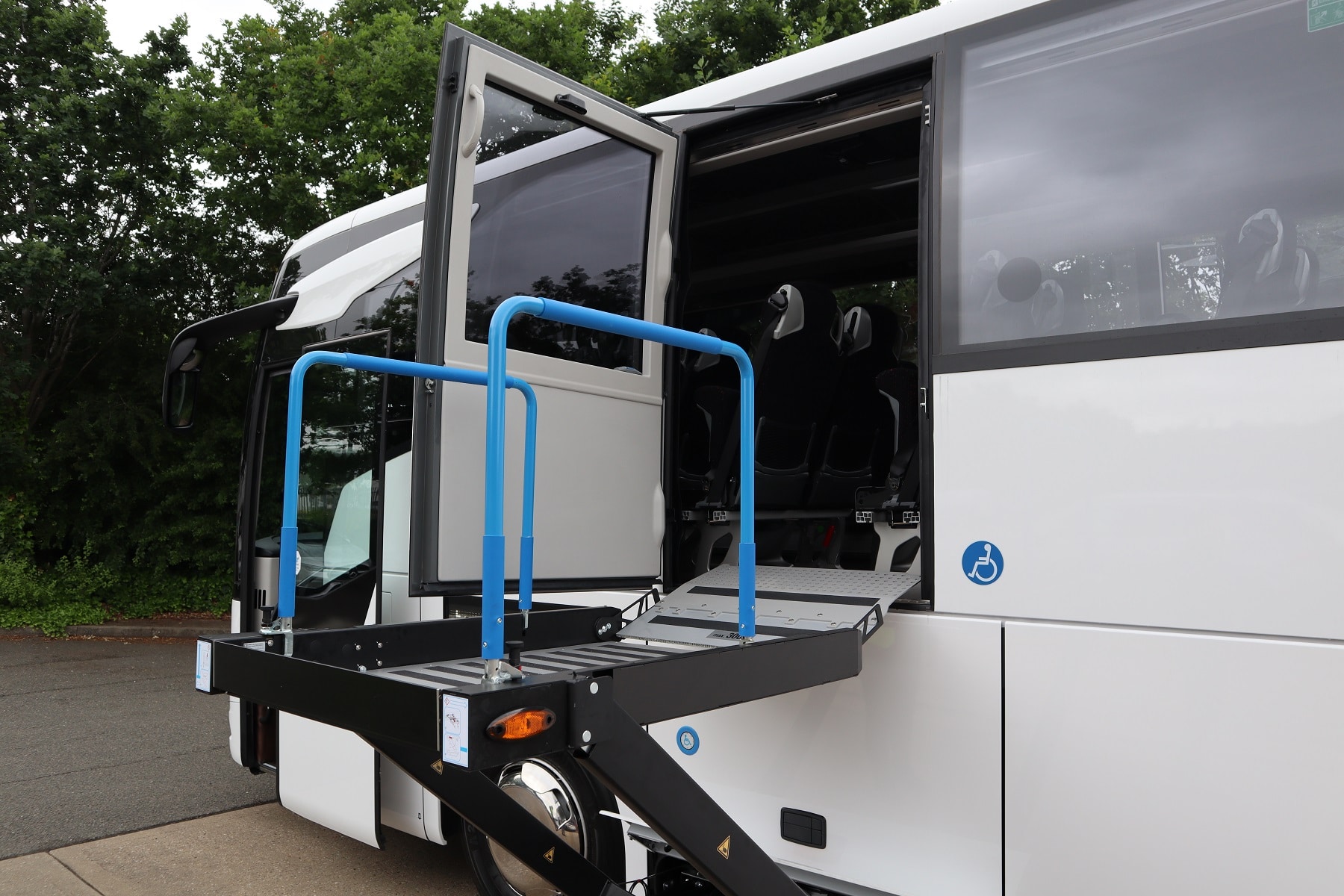
The manufacturer can mount more nearside seat pairs on tracking if the customer requires. However, an alternative to removing seats is also provided. The three tracked pairs come with tip-up bases.
That allows them to remain within the cabin but be shuffled together to create space for a wheelchair user. Such an operation is simpler than removal, but it comes with a loss of eight seated positions.
A good, spacious working space for the driver
The Tourismo’s cab is one of the largest to be found in the coach market, which is beneficial for the driver. There is a great deal of space around the seat. Additionally, there are numerous other storage spaces to hand; that aspect is excellent and will be appreciated.
A Grammer seat is fitted, complete with twin armrests, an integrated microphone and a heating element. Like the steering wheel, it has good scope for adjustment. The dashboard dials are clear. Controls for the variable cruise control and speed limiter are part of the wheel; stalks are chunky.
Also very good is visibility through the large, deep signalling window. It is a one-piece unit that gives a peerless view at roundabouts and junctions, is heated and has a manual blind. Twin powered blinds are above the windscreen.
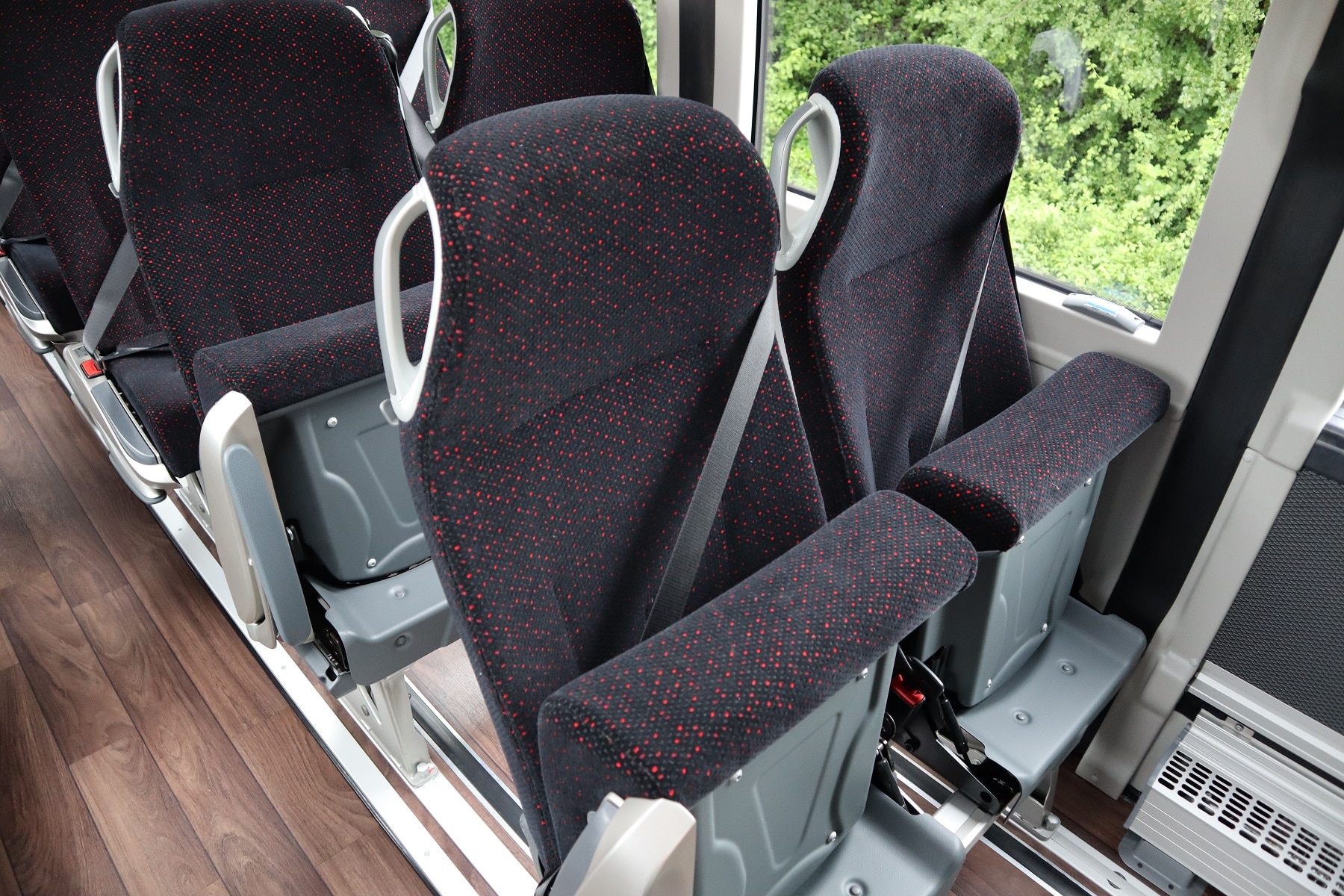
When all is combined, the Tourismo driver has a commanding view. That is further helped by mirrors that are well away from the A-pillars.
A rear-view camera feeds to a multifunction dash unit that also includes coach-specific satellite navigation and a DAB digital radio.
One element that the Tourismo shares with some other coaches is the low position of the handbrake lever. While that may not be an issue for shorter drivers, it can be for those that are taller, and in the latter case reaching it requires a downwards stretch.
Smaller-engined coach put through its paces
The Tourismo is a known quantity when equipped with the OM 470 engine, but examples with the OM 936 are less common. The smaller unit develops 350bhp and 1,400Nm of torque. Both are modest figures, but on paper they are sufficient for a two-axle coach.
Clutch take-up is good enough. Powershift usually opts for second gear when moving away, although it chose first on one occasion. Its shifting strategy is heavily dependent on the accelerator position. When under full throttle and climbing away from a roundabout, it spun the OM 936 beyond 2,000rpm, but on flatter roads the engine speed is kept lower.
Despite the OM 936’s modest displacement, gearing is still quite high. At the limited speed the tachometer shows 1,350rpm in top. Powershift will take eighth gear at the single carriageway 50mph maximum on flat roads, with around 1,100rpm displayed. But it is quick to drop a ratio to ensure that momentum is maintained.
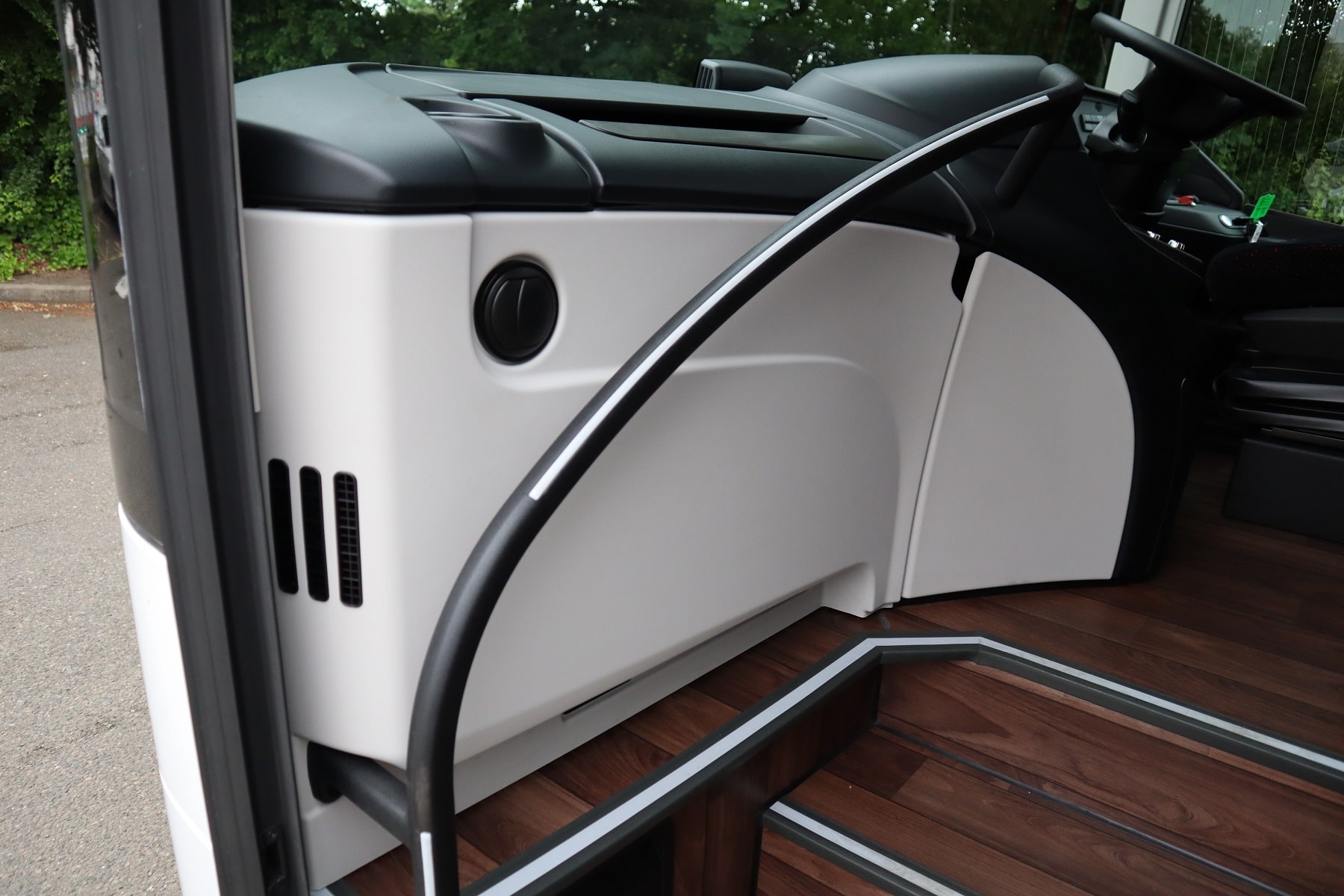
While there is a difference in how the OM 936-equipped Tourismo accelerates than one with the OM 470 – and particularly at higher speeds – power is still adequate.
There also comes a major benefit with the smaller engine. On a course encompassing a mix of motorway and single-carriageway roads, the Tourismo Access turned in a highly credible fuel return of 11.9mpg.
Other aspects of the driving experience are positive. The running units handle harder cornering well and the driver quickly adapts to the coach. Perhaps most impressive is the performance of the five-step retarder. It is as powerful as any other in the market and it slows the Tourismo rapidly in its higher stages.
Appeal of newcomer to Tourismo range is obvious
EvoBus (UK) is already seeing interest in the Tourismo Access from a variety of operators. It had sold a number before the first one arrived. With PSVAR at the top of the industry’s agenda, the appeal of coaches that offer it as standard while also bringing a good amount of versatility is obvious.
The dealership has worked closely with colleagues in Germany and Turkey to optimise the Tourismo Access specification and keep the model as cost effective as possible.
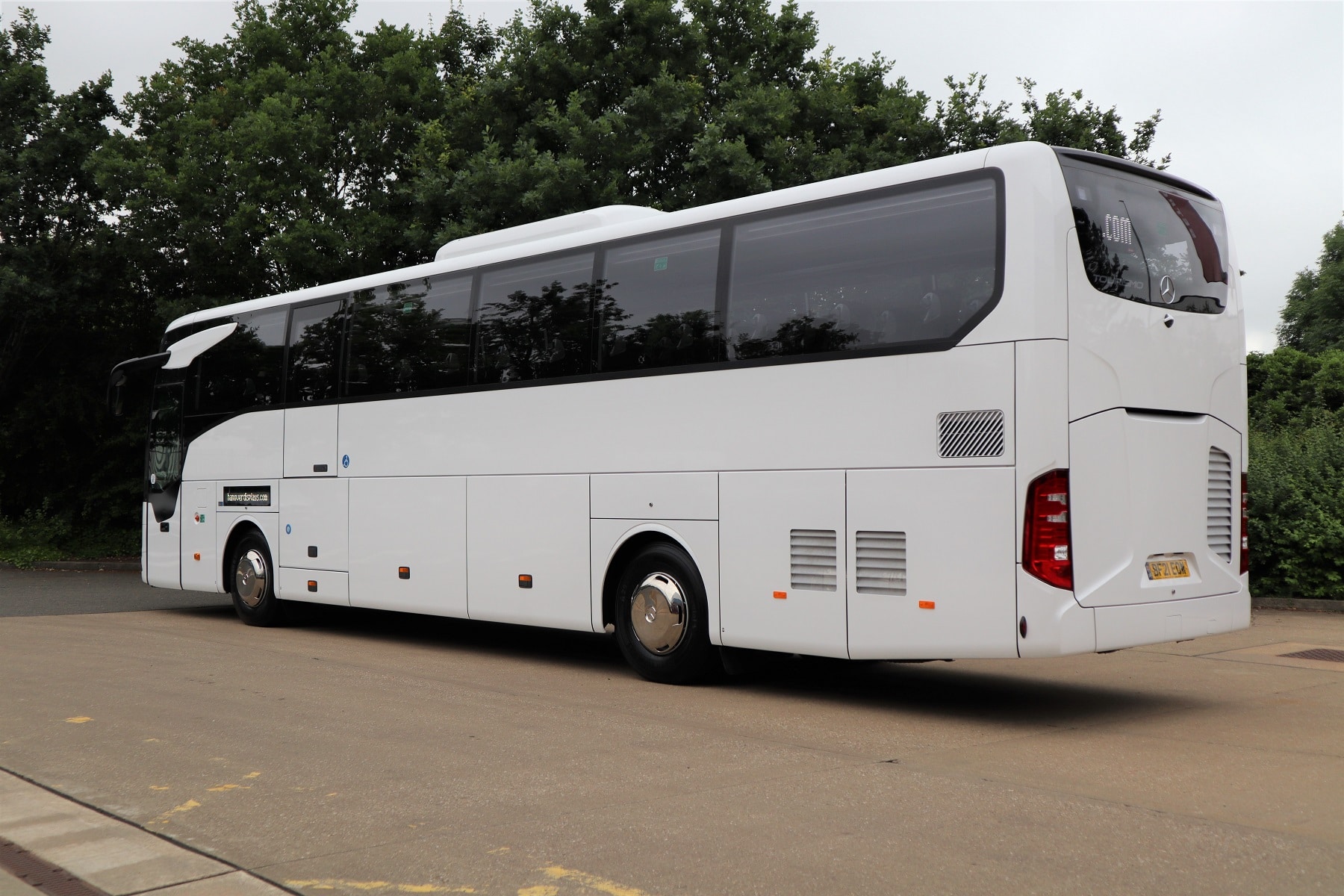
The role of such a coach is clear, and the use of a smaller engine may prove to be a shrewd move.
The OM 936 gave excellent fuel economy when tested, and its 350bhp is likely to be ample on much of the work that a coach of this nature would expect to see.
While the Tourismo Access is unquestionably a pared down variant of a coach that has proven to be highly successful, it comes with what is required for the application it is aimed at. Operationally, it retains all that is good about its established brothers. And, like those, it will be a strong contender in its part of the market.
Facts and figures
Engine: 7.7-litre, six-cylinder OM 936
Power: 260kW (350bhp) @2,200rpm
Torque: 1,400Nm (885 lb ft) @1,200-1,600rpm
Emissions: Euro VI using EGR and SCR
Tyres: 295/80 R22.5
Length: 12.30m
Height: 3.70m
Width: 2.53m
Wheelbase: 6.09m
Gross weight: 19,500kg
Unladen weight: Not known




















